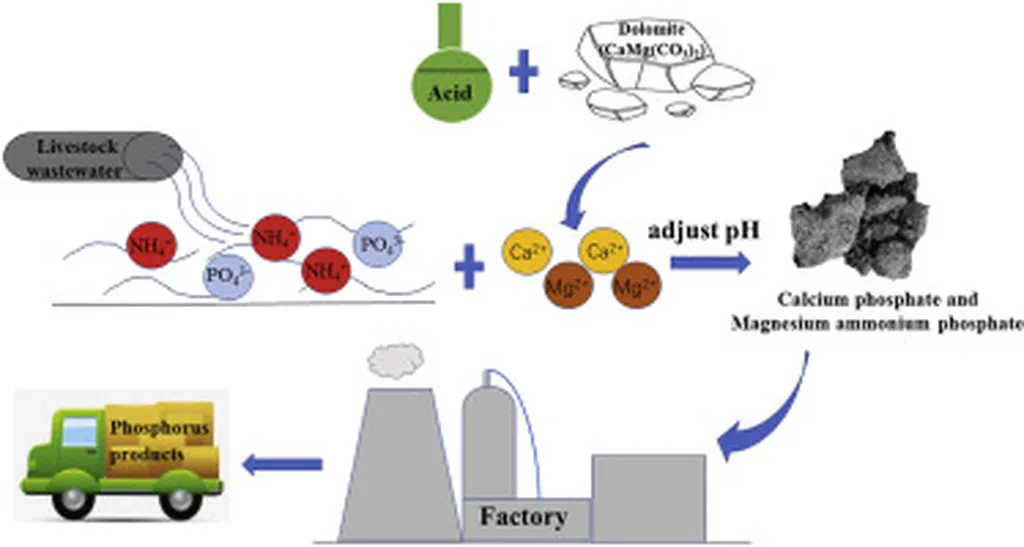In the quest to mitigate phosphate pollution in water bodies, a team of researchers has turned to an unlikely duo: soybean hull waste and dolomite. Their innovative approach, published in *Results in Chemistry*, not only addresses environmental concerns but also offers a promising avenue for the agricultural sector to repurpose waste materials.
Phosphate, a critical nutrient for plant growth, becomes a pollutant when it accumulates in water bodies, leading to eutrophication and harmful algal blooms. Current methods of phosphate removal from wastewater can be costly and energy-intensive. The research led by Dina Wahyu Indriani from the Department of Chemistry at Institute Technology Sepuluh Nopember (ITS) and the Department of Biosystem Engineering at Universitas Brawijaya presents a sustainable and efficient alternative.
The study focuses on creating advanced adsorbent materials using soybean hull waste and dolomite. “We repurposed these natural resources to develop biochar composites that can effectively reduce phosphate concentrations in water,” Indriani explained. The team experimented with different pyrolysis temperatures to optimize the properties of the soybean hull-dolomite (SD) biochar composite.
At 400°C, the dolomite phase was retained with minimal carbon defects, while higher temperatures of 600°C and 800°C transformed the dolomite into calcium carbonate (CaCO3). Interestingly, the higher temperatures also increased the presence of disordered carbon, which enhanced the adsorption capacity of the composite. “SD 800°C exhibited the highest adsorption capacity, attributed to the presence of CaCO3 and magnesium oxide (MgO), which strengthened the interaction between phosphate and the composite,” Indriani noted.
The stability of the SD composite after adsorption was another significant finding. The researchers observed no significant changes in the composite’s features, indicating its potential for repeated use and long-term stability.
The implications for the agriculture sector are substantial. Soybean hulls, typically considered agricultural waste, can now be transformed into a valuable resource for water treatment. This not only reduces waste but also provides farmers with an additional revenue stream. “This finding provides a concept for developing adsorbents from natural resources with good stability and performance,” Indriani said, highlighting the dual benefits of environmental protection and economic gain.
The research opens up new possibilities for sustainable agriculture and water management. By repurposing agricultural waste, farmers can contribute to cleaner water bodies while also benefiting economically. This innovative approach could inspire further developments in the field, encouraging the exploration of other agricultural by-products for environmental applications.
As the world grapples with the challenges of pollution and waste management, studies like this offer a glimmer of hope. They demonstrate that with creativity and scientific rigor, even the most mundane materials can be transformed into solutions that benefit both the environment and the economy.

